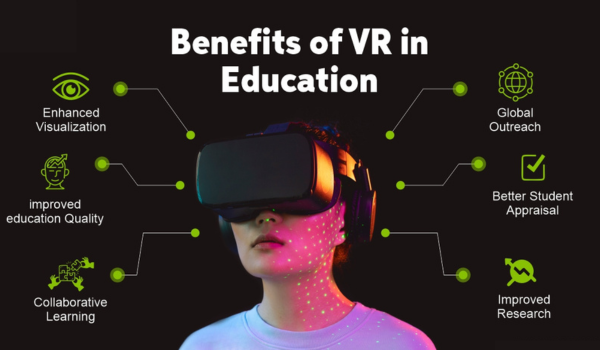Using Virtual Reality for Training and Development in Small Businesses

Introduction to VR in Training and Development
Using Virtual Reality for Training and Development in Small Businesses ,In today’s fast-paced business environment, small businesses are constantly looking for innovative ways to train and develop their employees. One such groundbreaking technology is Virtual Reality (VR). VR offers immersive training experiences that can be both engaging and highly effective. This article explores the benefits, applications, and implementation strategies of VR for small business training and development.
What is Virtual Reality?
Virtual Reality is a computer-generated simulation that allows users to interact with a three-dimensional environment using special electronic equipment, such as VR headsets and gloves fitted with sensors. Unlike traditional training methods, VR provides an immersive experience that can simulate real-world scenarios.
Key Components of VR Technology
VR technology comprises several components:
- Headsets: Devices like the Oculus Rift, HTC Vive, and PlayStation VR provide immersive visual and auditory experiences.
- Controllers: Handheld devices that allow users to interact with the virtual environment.
- Sensors and Cameras: Track user movements and ensure accurate representation in the virtual space.
- Software: Applications and programs that create and manage the virtual environment.

Benefits of VR Training for Small Businesses
- Enhanced Learning Experience: VR training is highly interactive, making it easier for employees to grasp complex concepts.
- Cost-Effective: While the initial investment might be high, VR can save costs in the long run by reducing the need for physical training materials and travel expenses.
- Risk-Free Environment: Employees can practice in a safe, controlled environment without the risk of real-world consequences.
- Improved Retention Rates: The immersive nature of VR helps in better retention of information compared to traditional learning methods.
Applications of VR in Small Business Training
- Employee Onboarding: New hires can be introduced to company culture, policies, and procedures in an engaging way.
- Safety Training: VR can simulate hazardous situations, allowing employees to learn how to handle them safely.
- Customer Service Training: Employees can practice handling various customer scenarios, improving their problem-solving and communication skills.
- Technical Skills Training: VR can provide hands-on experience with machinery or software without the need for physical equipment.
How VR Enhances Learning Experiences
VR transforms passive learning into active learning by involving users in practical, hands-on experiences. This engagement helps to solidify concepts and skills, making learning more effective and enjoyable.
Implementing VR Training in Your Small Business
1. Assess Training Needs
Before diving into VR, identify the areas where VR training can be most beneficial. Conduct a needs assessment to determine which skills and knowledge gaps can be addressed through VR.
2. Choose the Right VR Equipment
Invest in high-quality VR headsets and controllers that are compatible with your training software. Popular options include Oculus Rift, HTC Vive, and PlayStation VR.
3. Develop Custom VR Content
Work with VR developers to create custom training modules tailored to your business needs. This could involve 3D modeling, scenario scripting, and integrating interactive elements.
4. Train the Trainers
Ensure that your training facilitators are comfortable with the VR technology. Provide them with adequate training to guide employees effectively.
5. Pilot Test
Run a pilot test with a small group of employees to gather feedback and identify any technical issues. Use this feedback to refine the VR training program.
6. Roll Out the Program
Once the pilot is successful, implement the VR training across your organization. Monitor its progress and make adjustments as needed.
Measuring the Effectiveness of VR Training
Key Performance Indicators (KPIs) for VR Training
Measure the success of your VR training programs using KPIs such as:
- Knowledge Retention: Assess how well employees retain the information through quizzes and practical assessments.
- Skill Proficiency: Evaluate the improvement in specific skills that were targeted in the VR training.
- Training Efficiency: Measure the time taken to complete training modules compared to traditional methods.
- Employee Feedback: Collect feedback from employees on their VR training experience to identify areas for improvement.
Developing VR Training Programs
Steps to Create Effective VR Training Modules
- Define Objectives: Clearly outline what the training program aims to achieve.
- Design Content: Develop scenarios and tasks that align with your training objectives.
- Develop Modules: Use VR development tools or partner with VR content creators to build your training modules.
- Test and Refine: Conduct pilot tests to gather feedback and make necessary adjustments.
Examples of Successful VR Training Programs
- Healthcare: VR simulations for surgical training and patient care scenarios.
- Manufacturing: Virtual factory tours and equipment operation training.
- Customer Service: Interactive role-playing scenarios for handling customer inquiries and complaints.
Challenges and Solutions in VR Training
1. High Initial Costs
While VR can be cost-effective in the long run, the initial investment in equipment and content development can be high. Look for budget-friendly VR solutions or consider leasing equipment.
2. Technical Issues
VR training can be hampered by technical glitches. Ensure you have a robust IT support system in place to address any issues promptly.
3. Employee Resistance
Some employees may be hesitant to adopt new technology. Offer demonstrations and highlight the benefits of VR training to encourage participation.
Future Trends in VR Training
The future of VR training looks promising with advancements in technology. Emerging trends include:
- Augmented Reality (AR) Integration: Combining AR with VR to create more interactive training experiences.
- AI-Powered Training: Using artificial intelligence to provide personalized training and real-time feedback.
- Remote VR Training: Enabling remote teams to participate in VR training sessions from different locations.

Conclusion
Implementing VR for training and development in small businesses can transform the way employees learn and grow. By providing immersive, interactive, and safe training experiences, VR can help small businesses enhance their workforce’s skills and productivity. While there are challenges to overcome, the long-term benefits make VR a worthwhile investment.
FAQs
1. Is VR training suitable for all types of businesses?
VR training can be adapted to various industries, but it’s particularly effective for roles that require hands-on practice or deal with complex scenarios.
2. How expensive is it to implement VR training?
The cost can vary widely based on the quality of equipment and complexity of the training modules. However, the investment can lead to significant savings and benefits over time.
3. Can VR training be used for soft skills development?
Yes, VR is highly effective for soft skills training, such as leadership, communication, and teamwork, by simulating real-life interactions.
4. What are the common challenges of VR training?
Challenges include high initial costs, technical issues, and employee resistance. These can be mitigated through careful planning and support.
5. How can I measure the success of VR training programs?
Use KPIs like knowledge retention, skill proficiency, training efficiency, and employee feedback to measure the effectiveness of VR training programs.






